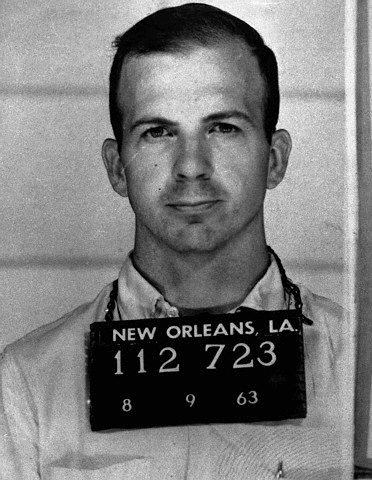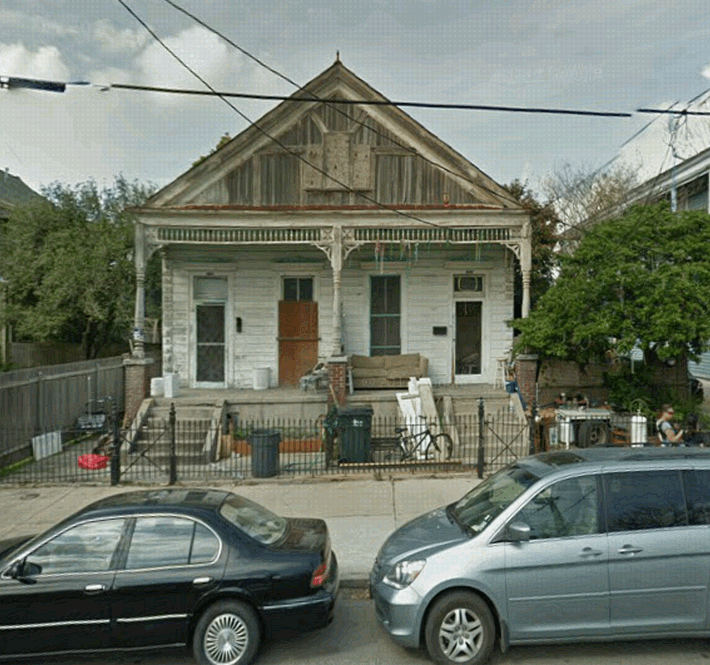|
Today in New Orleans History |
|
|
May 9



The last reported medical problem listed by the safety board occurred the
night before the May 9 accident, when he was treated for "nausea and weakness," given fluids and sent home at 11
p.m. -- just 10 hours before taking the assignment to drive 43 passengers from LaPlace for a Mother's Day outing at Casino
Magic in Bay St. Louis, Miss., according to the National Transportation Safety Board. The board put most of the blame
on driver error. Bedell died of a heart attack three months after the crash. The safety board recommended a major
overhaul of the medical certification process, saying the system in effect in 1999 allowed drivers with health problems
like Bedell to "shop around" until they could find a doctor willing to certify that they were fit to be a commercial
driver. After the 1999 New Orleans bus crash, Congress passed legislation creating the Federal Motor Carrier Safety
Administration. But the agency, under pressure from bus and trucking companies, delayed making many of the changes advocated
by the National Transportation Safety Board.  

To receive an update for each day in New Orleans
history, join our facebook page
- Today in New Orleans History
Tweet
At the Wednesday May 9, 1832 session of the Conseil de Ville (City Council) it was
resolved "that the Mayor is and remains authorized to use the stores necessary to complete the sidewalks "City
Carre' Banquettes" already begun at the ???? intersections. The paving material left over and that which shall hereafter
be had from this should be exclusively used to pave Royal Street. Approved May 15, 1832 by D. Prieur, Mayor". (NOPL) Testimonial Roast for Henry Thomas, "Mr. Golf" in New Orleans “In Lieu Of Flowers, Please Make Donations To Rebuild City Park Golf Course” requested
the Times-Picayune obituary for Francis Henry Thomas who died on December 2, 2005 in Houston months after
post-Katrina federal flood-wall breaks caused ruin to park's courses and displaced him, his wife Romy, and hundreds of thousands
of other New Orleanians. Thomas had dedicated more than half of his 94 years to caring for and expanding City
Park's golf offerings into one of the largest facilities in the country. He came to be known as "Mr. Golf"
to local adherents of the sport. Henry Thomas began working, in 1920, as a caddy at the park when
he was 9 years old. He carried Babe Ruth's clubs when the Yankees trained in New Orleans. In 1929, Thomas became a pro at
age 18 and in 1930 he became an assistant at City Park. He then moved to Colonial Country Club in Harahan until 1933
when he returned as head pro at City Park when golf facilities included a mere 9-hole course abutting the McFadden mansion
(now Christian Brothers School) and property. Thomas remembered the "Black Cat", a
depression era speakeasy on the 13th hole near Bayou St. John, where golfers stopped for a home-brew -- many of them then
failing to complete the remaining holes. During the 1930s he organized a Christmas Holiday Tournament which evolved
into the New Orleans Open, which he was instrumental in organizing and served twice as its chairman. In 1933 he organized
free weekly lessons for children age 5 through 14 which continued for decades and introduced generations of New Orleanians
to the sport. The program grew to include as many as 200 teachers, many of whom he had taught. A good number of
his students became golf professionals, including the man who would replace him when he retired. During
Thomas' tenure the following improvements were completed: A new nine hole golf course completed in 1937, which added
nine holes to the original course. It ran along Bayou St. John, surrounded the McFadden property, and continued north of
Art Museum. The WPA caption for the 1930s photograph above reads "Golf the Year Round. This course, in beautiful
City Park, is one of the six evergreen golf courses in New Orleans on which play is continuous the year round”. The old St. John's
golf clubhouse was remodelled at this time and was surrounded by additional structures which contained a lobby, lounge,
display shop, men's and women's locker rooms (increased from 75 to 250 lockers), and a caddy house accommodating 300 caddies
with a sound system connecting with the club house and a bulletin board maintained to display current news on golfing events
throughout the country, and an outdoor recreational area – all at a cost of $85,000. For the 1938 New Orleans Open
PGA Golf Tournament Mayor Robert S. Maestri donated $5000 in prize money – then $10,000 per year until 1941 when dentist
Herbert H. Meyer donated $5,000. The 1938 event attracted 10,000 spectators. The Crescent City Open in 1938 was won by
Lloyd Mangrum who bested Sam Snead and Lawson Little. The park hosted the Open until 1962. 1969 brought the addition of the 18-hole North Course and another club house -- Mayor Victor
Schiro was the first to tee off. That year the 15,000 square-foot "Henry Thomas' Golf Shop" in the park at
1040 Filmore Street took in $6,500 in gloves sales alone (5% of the total volume of the shop, at which Mrs. Romy Thomas, his
wife, worked). The Greater New Orleans
Sports Hall of Fame inducted Henry Thomas in 1977. In 1984 Friends of City Park named a tournament for him.
Golfers played 250,000 rounds of golf at City Park that year. In 1986 he asked that his contract be extended for another
two years, which the City Park commissioners approved, but in 1988 they decided that it was time for him to retire. Lee Harvey Oswald Takes Job at the William B. Reily Coffee Company May 9, 1963 New Orleans Police Department photographic records. August 9, 1963 Lee
Harvey Oswald was born in the French Hospital at 1821 Orleans Avenue in New Orleans on
October 18, 1939 to Robert Edward Lee Oswald, Sr. and Marguerite Frances Claverie. Robert, Sr. died of
a heart attack two months prior to Lee's birth. Oswald had two older siblings—brother Robert Edward Lee Oswald, Jr.
and half-brother John Edward Pic. In 1944, Oswald's mother moved the family from New Orleans to Dallas. Oswald entered
the 1st grade in 1945 and over the next half-dozen years attended several different schools in the Dallas and Fort Worth
areas through the 6th grade. As a child, Oswald was described by several people who knew him as withdrawn and temperamental.
In August 1952, when Oswald was 12, his mother took him to New York City where they lived for a short time with Oswald's
half-brother, John Pic. Oswald and his mother were later asked to leave after an argument in which Oswald allegedly struck
his mother and threatened Pic's wife with a pocket knife. Oswald attended the 7th grade in the Bronx, New York but
was often truant, which led to a psychiatric assessment at a juvenile reformatory. The reformatory psychiatrist, Dr. Renatus
Hartogs, described Oswald as immersed in a "vivid fantasy life, turning around the topics of omnipotence and power,
through which [Oswald] tries to compensate for his present shortcomings and frustrations." Dr. Hartogs detected a "personality
pattern disturbance with schizoid features and passive-aggressive tendencies" and recommended continued treatment. In January 1954, Oswald's mother returned to New Orleans, taking Oswald with her.
At the time, there was a question pending before a New York judge as to whether Oswald should be removed from the care of
his mother to finish his schooling, although Oswald's behavior appeared to improve during his last months in New York.
In New Orleans, Oswald attended Beauregard Jurnior High and Warren Easton High -- completing the 8th
and 9th grades and entering the 10th grade in 1955 but quit school after one month. After leaving school, Oswald worked
for several months as an office clerk and messenger in New Orleans. As a teenager, in 1955, Oswald attended Civil Air Patrol
meetings in New Orleans. Oswald's fellow cadets recalled him attending C.A.P. meetings "three or four" times,
or "10 or 12 times" over a one- or two-month period . Though the young Oswald had trouble spelling and writing
coherently, he read voraciously. By age 15, he claimed to be a Marxist, writing in his diary, "I was looking for a key
to my environment, and then I discovered socialist literature. I had to dig for my books in the back dusty shelves of libraries."
At 16 he wrote to the Socialist Party of America for information on their Young People's Socialist League, saying he had been
studying socialist principles for "well over fifteen months.' However, Edward Voebel, "whom the Warren
Commission had established was Oswald's closest friend during his teenage years in New Orleans...said that reports that
Oswald was already 'studying Communism' were a 'lot of baloney.' " Voebel said that "Oswald commonly read 'paperback
trash.'" In July 1956, Oswald's mother moved the family to Fort Worth, Texas and Oswald re-enrolled
in the 10th grade for the September session. A few weeks later in October, Oswald quit school at age 17 to join the Marines
he never received a high school diploma. By the age of 17, he had resided at 22 different locations and attended 12 different
schools. Oswald returned to New Orleans on April 24, 1963. What follows are some of his activities
in the city based on W. Tracy Parnell's information: In 1963 Lee Harvey Oswald, his wife Marina, and their daughter June lived in the rear of the right
half of this double at 4907 Magazine Street, April 25, 1963:
He moves in with his aunt Lillian Murret at 757 French Street in Lakeview. Murret was the sisiter of his mother,
Marguerite Oswald. April 26, 1963: He visits the employment office in New Orleans. April 28, 1963: He makes an effort to contact relatives on his father's side. April
29, 1963: Files an appeal concerning his unemployment benefits. May 9, 1963: With the help
of Myrtle Evans, a long-time friend of his mother, finds work at the William B. Reily Coffee Company whose owner, William
Reily, was a backer of the Crusade to Free Cuba Committee, an anti-Castro organization. Oswald worked as a machinery greaser
for $1.50 per hour. He also finds an apartment. May 10, 1963: Starts work
at the William B. Reily Coffee Company and moves into an apartment which was rented for $65 per month at 4907 Magazine St.
(near Upperline) owned by Mrs. J. J. Garner of 4911 Magazine. "He wouldn't speak to anyone", she said and
reported that neighbors told her that he usually stayed home "sitting on the porch reading all day long". May 11, 1963: Ruth, Marina, and June (his child) arrive at the apartment. May 26, 1963: Oswald writes to the New York
City headquarters of the pro-Castro Fair Play for Cuba Committee, proposing to rent "...a small office at my
own expense for the purpose of forming a FPCC branch here in New Orleans." May
29, 1963: The FPCC responded to Oswald's letter advising against opening a New Orleans office "at least not
... at the very beginning." In a follow-up letter, Oswald replied, "Against your advice, I have decided to take
an office from the very beginning." As the sole member of the New Orleans chapter of the Fair Play for Cuba Committee,
Oswald ordered the following items from Jones Printing Company, 422 Girod Street (near
the Reily building): 500 application forms, 300 membership cards, and 1,000 leaflets with the heading, "Hands
Off Cuba." According to Lee Oswald's wife Marina, Lee told her to sign the name "A.J. Hidell" as chapter
president on his membership card. June
3, 1963: Rents a new PO box, using A.J. Hidell as one of the people who will receive mail there. June
8, 1963: Marina is rejected for treatment at Charity Hospital, which infuriates Oswald. June
16, 1963: Distributes FPCC literature at the Dumaine Street wharf. June 24, 1963: Applies
for a new passport. July 6, 1963: Is invited by his cousin Eugene Murret to speak to a group of
students at the Jesuit House of Studies in Mobile, Alabama, where Eugene is studying to be a priest. July
11, 1963: Ruth invites Marina to live with her separately from Oswald. July
19, 1963: He is fired from the Reily Coffee Company "...because
his work was not satisfactory and because he spent too much time loitering in Adrian Alba's garage next door (at 618 Magazine
Street), where he read rifle and hunting magazines." . July 22, 1963:
He files a claim for unemployment benefits. July 25, 1963: His request for a review of
his undesirable discharge from the military is denied. July 27, 1963: Speaks to the Jesuit
group for 30 minutes on the subject of "Contemporary Russia and the Practice of Communism". August 5 and 6, 1963: According to 29 year-old anti-Castro
militant Carlos Bringuier, Oswald visited him at Casa Boca (107 Decatur Street
at Canal St. next to the Cusom House), a store he owned. Bringuier was the New Orleans delegate for the Student
Revolutionary Directorate (DRE), an anti-Castro organization. Bringuier would later tell the Warren Commission that he
believed Oswald's visits were an attempt by Oswald to infiltrate his group. August 6, 1963: Leaves
his Marine Corps manual at Bringuier's store. August 9, 1963: Oswald distrubutes
pro-Castro leaflets downtown. Bringuier confronted Oswald, claiming he was tipped off about Oswald's
activity by a friend. A scuffle ensued and Oswald, Bringuier, and two of Bringuier's friends were arrested in the 700 block
of Canal Street for disturbing the peace. He spend the night in jail. August 10, 1963: A friend of the Murrets bails him out late in the afternoon. Before leaving the police station, Oswald asked to speak with an FBI agent. Agent John
Quigley arrived and spent over an hour talking to Oswald. August
12, 1963: Pleads guilty to the charge of disturbing the peace and is fined $10. August
16, 1963: Oswald passes out Fair Play for Cuba leaflets with two hired helpers in front of the International Trade Mart.
The incident was filmed by WDSU—the local TV station. August 17,
1963: Radio commentator William Stuckey from radio station WDSU visits him and asks him to appear on the program Latin Listening
Post. He arrived at the station at 5:00 PM and taped a 37-minute segment, which was cut to 4 and a half minutes and broadcast
at 7:30 that evening. Stuckey also invites him to take part in a radio debate with Carlos Bringuier and Bringuier's
associate Edward Butler, head of the right-wing Information Council of the Americas (INCA). August
19, 1963: Accepts Stuckey's offer to debate Bringuier and Butler on live radio. August
21, 1963: Debates Bringuier and Butler, on the program Conversation Carte Blanche, which runs from 6:05 to 6:30 PM. September 17, 1963: Obtains a tourist card good for one visit to Mexico City from the Mexican
consulate in New Orleans. September
20, 1963: Ruth visits the Oswalds, and it is decided that Marina will return to Irving, Texas with Ruth for the birth of their second child. September 23, 1963: Ruth and Marina
leave for Irving. September 25, 1963: Oswald collects his unemployment
check of $33. Later that day he catches a bus bound for Houston. According to his landlord, Mrs. J. J. Garner, he owed about
15 days rent and according to his landlady "All he left was an empty carton of beer cans". A
1988 Times-Picayune article looked back at Oswald's time in New Orleans during the summer of 1963: Kerry and Diane West who
then occupied the Magazine Street home the Oswald's had rented were interviewed. Diane remembered Oswald from her childhood
when she lived in the same neighborhood. She described him as a reclusive figure who wore a old felt hat and a faded
trenchcoat who scolded his child in Russian. She remembered that he dug in neighbors' garbage cans for discarded newspapers
and magazines. She said, "He never talked to anyone. He was sneaky". Another neighbor, Catherine Schmitt
said, "Most of the time he walked backwards" and "Spent most of his time looking at the sky". She
said Marina was seldom seen outside. Adrian Alba, who owned a garage near the Reily building, had somewhat
befriended Oswald who spent much time playing hookie from work at his business. Oswald enjoyed reading Alba's gun and hunting
magazines and discussing guns with him. Oswald had even invited Alba several times to his home to see his "gun
collection" but never set a time and date. While working at Reily, Oswald, like his co-workers, often had lunch
at Martin's Restaurant at 701 Tchoupitoulas, which was near the buisness, but he sat alone in a booth near the back
of the restaurant. Marina said that she and Lee went to the French Quarter but didn't have enough money
to eat in any of the restaurants. The Oswalds took their daughter to Audubon Park and the zoo. |
|
|

To receive an update for each day in New Orleans history,
join our facebook page - Today in New
Orleans History.
Analytics |
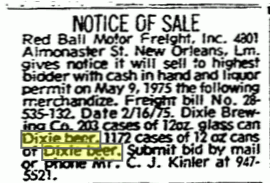
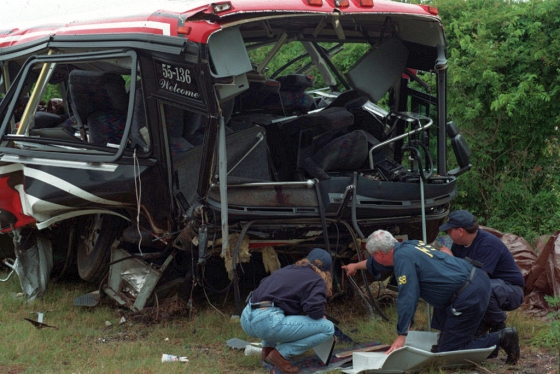
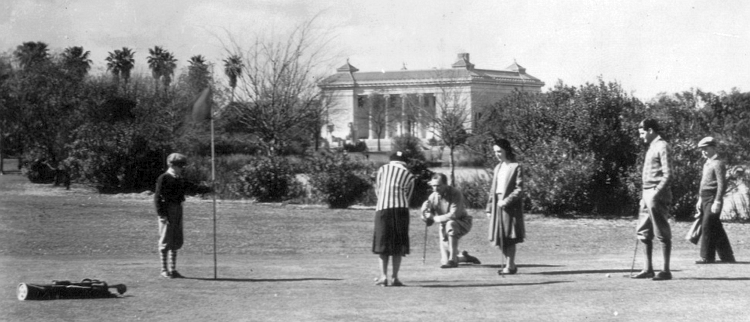
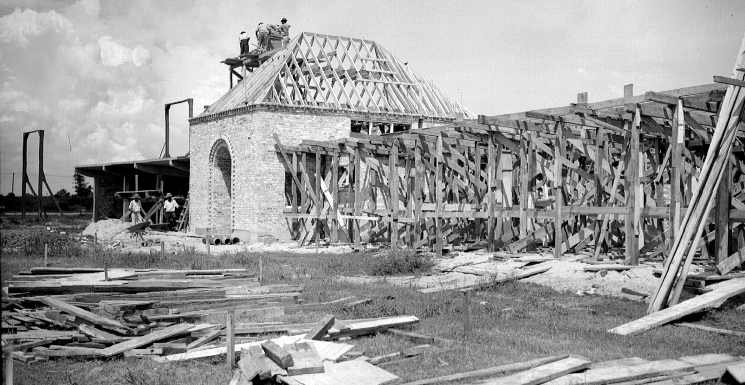 The driving range is under construction in this 1938 view (left). WPA notes for this photograph are, “It
will have an administrative building which will contain lockers and dressing rooms; refreshment room; six stalls, each of
which will be 18 feet wide. The field will be equipped with four batteries of flood lights”.
The driving range is under construction in this 1938 view (left). WPA notes for this photograph are, “It
will have an administrative building which will contain lockers and dressing rooms; refreshment room; six stalls, each of
which will be 18 feet wide. The field will be equipped with four batteries of flood lights”. 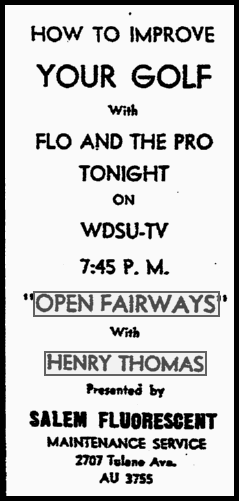 In 1940, Thomas inaugurated an annual tournament for juveniles. In 1942, he created a club for working women golfers,
Beginning in the 1940s, he began visiting Carville Leprosarium twice each month to teach doctors and patients, and continued
to do so until the 1980s.
In 1940, Thomas inaugurated an annual tournament for juveniles. In 1942, he created a club for working women golfers,
Beginning in the 1940s, he began visiting Carville Leprosarium twice each month to teach doctors and patients, and continued
to do so until the 1980s. 